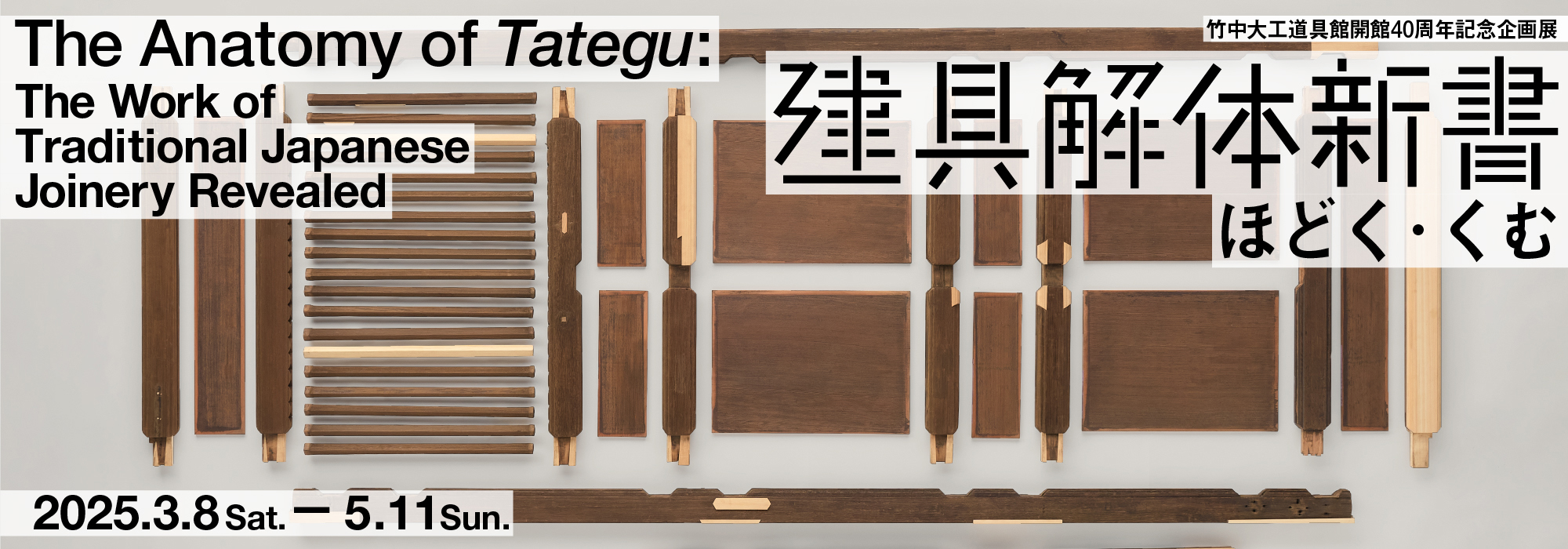| Exhibition Outline |
The doors and partition panels that allow movement between spaces of Japanese traditional-style buildings are called tategu. They are parts of the buildings that are in constant use, day after day, year after year. Particularly the doors of temples, shrines, and other buildings that have been designated cultural properties have been opened and closed through very long histories, in some cases for several hundred years, and they keep on functioning. What are the secrets of their durability?
This exhibition looks into the internal structure of such tategu panels, as seen when they are dismantled and in the techniques used to repair damaged parts and restore their function. The exhibits probe deeply into the traditional technologies used in the production of tategu, which is part of the “traditional skills, techniques and knowledge for the conservation and transmission of wooden architecture in Japan” inscribed in 2020 on the UNESCO Intangible Cultural Heritage of Humanity list. Herein lies revealed the ordinarily unseen ingenuity and craft of the tategu artisan.
- Exhibition Title
- The Anatomy of Tategu: The Work of Traditional Japanese Joinery Revealed
- Period
- March 3 (Sat.) – May 11 (Sun.), 2025
- Venue
- Takenaka Carpentry Tools Museum
- Hours
- 9:30–16:30 (Last admission 16:00)
- Closed
- Mondays (the following day when Monday falls on a national holiday)
- Admission*
- Adults 700 yen; seniors (over 65) and students (college/university, high school) 500 yen ; children (junior high school age and younger) Free
*Includes permanent exhibition fee
|
